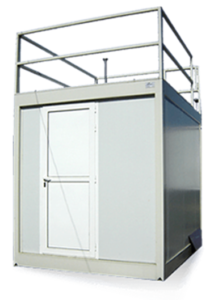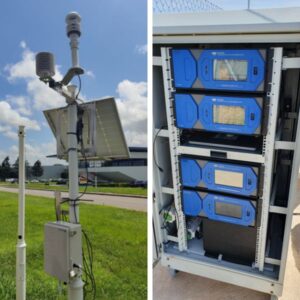The main objective of the Low Emission Zone (LEZ) is to control and slow down air pollution in cities.
These zones are defined areas within cities where access is restricted to vehicles that comply certain emission standards and are part of a wider effort to reduce air pollution in urban areas, helping to improve air quality, reduce health risks and improve quality of life.
The initiative was launched by the European Union in 2008 and has since been implemented in several cities.
According to the latest data from the World Health Organisation, nine out of ten people breathe air that is highly polluted by nitrogen oxides (NOx), ozone (O3) and particulate matter (PM10 and PM 2.5).
In fact, the European Environment Agency estimates that more than 20,000 premature deaths in Spain each year are caused by poor air quality, with the current mobility and transport model being one of the causes.
What are the objectives of controlling air pollution in cities and Low Emission Zones?
While LEZs are often implemented in only a part of the urban area, the strategic choice of areas must allow the benefits to be extended to the whole municipality or metropolitan area, within broader strategies for mobility change.
The main objectives of low emission zones are as follows:
Reducing mortality in cities due to poor air quality
This will be achieved by reducing emissions of air pollutants in line with WHO recommendations and European legislation.
Improving the quality of the noise environment
EPZs have a direct impact on vehicle noise emissions, which are reduced according to the restriction criteria and can be monitored by measuring noise levels with appropriate equipment.
Contributing to climate change mitigation
This objective aims to reduce greenhouse gas emissions in line with the objectives of the PNEIC.
Shift to more sustainable transport
The idea is to promote more active forms of transport (cycling or walking), low-emission public transport and more sustainable vehicles, and to try to reduce urban travel by private motor vehicles as much as possible.
Low Emission Zones and Air Quality
LEZ should be planned to improve air quality throughout the community, in line with European regulations and WHO recommendations.
In addition, targets must be measurable to ensure that they are within the legal limits and, if they are exceeded, that the measures taken are effective in achieving compliance in the shortest possible time.
Current government regulations on air quality include Law 34/2007, of 15 November, on Air Quality and Atmospheric Protection, and Royal Decree 102/2011, of 28 January, on Improving Air Quality.
The main pollutants directly emitted by transport are:
- Carbon monoxide (CO)
- Nitrogen oxides (NOx)
- Volatile organic compounds (VOCs)
- Particulate matter (PM).
In addition to these direct engine emissions, brake and tyre wear, as well as road erosion, contribute to the emission of particulate matter into the atmosphere for both internal combustion and electric vehicles.
Air pollution environmental monitoring
The strategy for monitoring the main pollutants can be pursued in two ways:
Air quality stations in the municipality, if they are under the influence of low emission zones. 
This core monitoring network includes other pollutants in addition to NOx and PM10 and PM2.5, and its measurements are used to contrast and calibrate the nanosensors.
The advantages are high accuracy, a large number of parameters, very high reliability and a certified measurement.
On the other hand, these stations are more expensive and require specific maintenance, building space and power requirements.
Combination of Nanosensorics with mini-stations

The great advantage of this combination is the reliability and accuracy of a type-approval mini-station multi-parametric NOx and PM analysers, sound level meter and meteorology, measuring all the indicators required by law for the LEZ, with legal backing for legal claims, and at a cost 70-80% less than an air quality station.
This mini-station is complemented by the nanosensors of devices such as the Nanoenvi EQ, a device that enables the creation of wireless air quality measurement networks.
Nanoenvi EQs will be able to compare their data directly with type accredited fixed stations and thus see how this data is derived and diverted.
Communication via own communication network.
In addition, the Nanoenvi EQ devices make it possible to collect data in places where it is not possible to install other reference devices in such a way as to force their measurement, which is very useful when talking about low emission zones in urban areas.
The benefits include easy installation, low consumption and low initial and maintenance costs.
Conclusion: Ways to reduce air pollution in cities and low emission zones in an effective, accurate and certified way.
As we have seen throughout this article, air quality is an increasingly important issue due to its direct impact on health and the environment.
Among the various measures to improve air quality by reducing air pollution in cities is the introduction of low emission zones, areas where traffic access is restricted to certain vehicles, allowing for the control and reduction of polluting emissions.
For environmental monitoring by municipalities and competent organizations, the most accurate and reliable solution is the mixed installation of a mini-station complemented by “X” number of Nanoenvi EQ devices, where “X” is determined by the area, type and extent of the LEZ itself.
This will provide a type-approval system but much more cost effective than traditional solutions.










